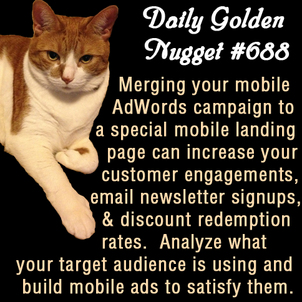 Internet memes are everywhere. Add a profound or funny statement to any picture of a cat and you might just have your own meme that goes viral today.
Internet memes are everywhere. Add a profound or funny statement to any picture of a cat and you might just have your own meme that goes viral today.You can learn a lot from a cat. They teach us humans that we should simply sit around and do nothing every once in a while. House cats seem to sit around all day enjoying their free time. All they care about is a clean litter box, frequent petting or brushing, and being fed. And when you run out of food, you better make a quick run to Petco otherwise little kitty will stomp all over your computer keyboard and completely disrupt your time on Facebook.
Seriously, if you have a pampered cat then you know what I mean when say you better never run out of cat food. There are 2 cats in my office in New Jersey, and I mention that as a warning for anyone allergic who ever decides to stop by and visit. I also have a Petco located about a mile from the office. There is at least 1 time I can remember when I needed to stop what I was doing and run out to Petco for their favorite food.
I also have a Petco P.A.L.S. rewards card, for which I occasionally receive a special discount coupon in the mail. But if I wanted to, I could completely change my membership rewards from being snail mailed to me, to being emailed to me. In fact, Petco actually has their current $5 off coupon right on their website. I could be a real maverick and simply call up the web page on my smartphone while I'm at the local checkout and the cashier will scan the barcode right from my smartphone screen.
Petco is one of the companies that blazed a very wide path through the internet jungle of e-commerce, mobile advertising, and mobile marketing years before anyone else would.
Back in 2003 they already had e-commerce well established on their websites when Visa suggested PCI-DDS compliance. Petco was one of the first companies to sign up for "HackerSafe" security scanning. HackerSafe was the first company to offer PCI compliance scanning, and Petco saw a boost in online sales simply by displaying the HackerSafe logo on the top right of their website. That logo is still there today, although now it says "McAfee Secure" because McAfee bought HackerSafe.
In 2010 Petco leapt forward into the mobile website world when they realized that a significant percentage of their website visitors were using mobile devices. At the time they were weighing the options between creating a mobile website or a mobile app. They decided to create a set of mobile banner ads using Google AdWords and link those ads to very specific mobile web pages.
The banner showed a nice photo of a cat and her owner and it offered a $10 coupon. That banner linked to a mobile page with another photo, but this time of a pit bull dog and her owner. Below the photo was a simple single field form asking for your email address. Once you submitted your email through the form you were presented with a mobile coupon to present to the cashier.
This was the first time Petco used a mobile landing page for their mobile ads, and it produced a 4.6% coupon redemption rate. Users had the choice of printing the coupon they received via email, or they could present their smartphones directly. The number of people presenting their mobile phones to the cashier outnumbered the printouts by 5 to 1.
For Petco this little test proved that their customers were gleefully embracing the easy mobile experience they created. A short time later Petco had a fully functioning mobile website with m-commerce.
Instead of my usual references to BlueNile, Tifany, Zales, or any of the other large online jewelry sellers, I wanted to present this well known case study about Petco. Many companies have copied the Petco mobile coupon model since Google announced these results in October 2010.
For you, the retail jeweler, you can also copy this method. You will need a Google AdWords account and a mobile website. Let me say that again because it was important... you will need a mobile website, NOT a website with a responsive website design. If you don't have a mobile website then find a company that will put together a simple 1-page mobile landing page that you can target with this campaign.
Within your Google AdWords account you need to create a banner ad that is 300 pixels by 50 pixels. This is the typical banner size that is seen on smartphones. Link that banner to your special mobile landing page. Add this banner into your normal AdWords campaign and track your results.
Naturally you will need to come up with an offer that is compelling for your customers. Remember that this particular strategy is not only about immediate sales. You are also collecting email addresses for future newsletters.
So you see, everything is better when you add a cat. Not only can we learn from cats, but we can learn a lot from one of the larger companies that makes money off all of us cat (and dog) lovers too.








